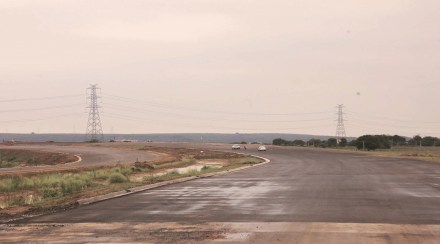By Virendra D Mhaiskar
It’s a proven and hence widely accepted fact that road and highways infrastructure development create a positive and direct impact on the economy. It boosts land prices, urban developments, commercial and self-entrepreneurship, as well as various job opportunities, etc in the region where the projects are envisaged and subsequently shaped. However, beyond it, for any infrastructure developer in the roads and highways sector, it is a long-term socio-economic-cultural and emotional investment, over not only the construction span, but also till the concession period; and then it serves as a reminiscence of its footprints left to carry on further for many years. Hence, the developer has naturally in-built expectations of support from the government when the Budget is announced.
No one can deny or defer on the fact that the development of roads has always been a proven, strong vaccine for an economic boost, since it has played a vital role in generating immediate capex needs and further boosting the economy by establishing a strong mobility mode.
The Economic Survey tabled a day before in the Parliament had clear revelations that the economy has achieved pre-pandemic levels and is now further set to gather pace to meet its desired goal of becoming a $5-trillion economy, with the large quantum of investment requirement of $1.4 trillion to be spent on infrastructure by FY25.
On looking at the Budget FY23 presented by the finance minister (FM), it looks to be in line with the expectations and goals set to take the Indian economy to the $5-trillion level by the year 2025. As far as the announcement about the 25,000 km of highways network expansion, with the mobility of Rs 20,000 crore to complement the public resources, is concerned, it somewhat looks like one of the initiatives under the plan; it further presents a basket of ample opportunities for the private players in the roads sector.
Now, the eagerly-awaited matter is how this proposal would be taken ahead and divided into the BOT, TOT, HAM and/or EPC categories. If we critically review this aspect, it has been visible that roads development under BOT and TOT have tremendously relieved the central government from the financial burden, as the entire responsibility of developing the project, collecting toll, operations and maintenance, etc, and the business risks have always remained with the concessionaires in the private sector, which joins hands with the government through a transparent bidding process under public-private partnership (PPP). The Economic Survey had made it evident that the PPP in the entire infrastructure sector has been the prime source of investment in the sector. As one of the leading and largest players in the highways development sector, committed to the nation’s comprehensive economic growth, I look forward to more focus and subsequent provisions and support on BOT and TOT projects under the envisaged project pipeline.
To conclude, the vital aspect of this Budget is the government’s renewed commitment to continued investment in strengthening India’s infrastructure. The proposal to fund infrastructure through PM Gati Shakti, public-private partnerships, etc will mark the escalation of economic prosperity. In short, the Budget seems to have given a booster dose to facilitate the faster economic growth of the nation; the roads sector is definitely one of the prominent sectors to get deserved focus through adequate funding.
I take this opportunity to welcome the Budget and congratulate the FM and her team, and above all the Government of India, for continuing with the focus on the infrastructure sector as a key driver towards achieving the set goals.
The writer is Chairman & Managing Director, IRB Infrastructure Developers. Views are personal.
